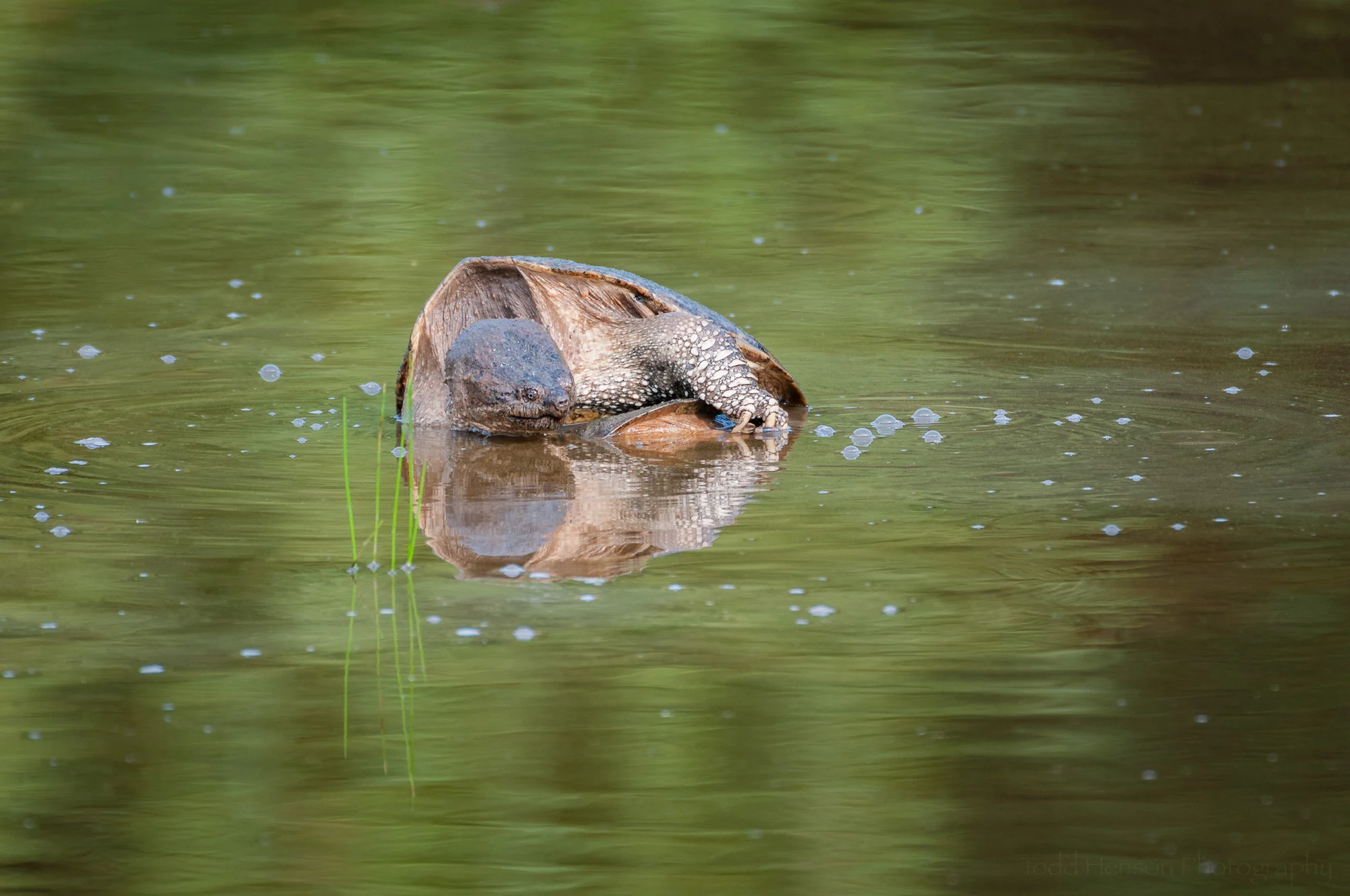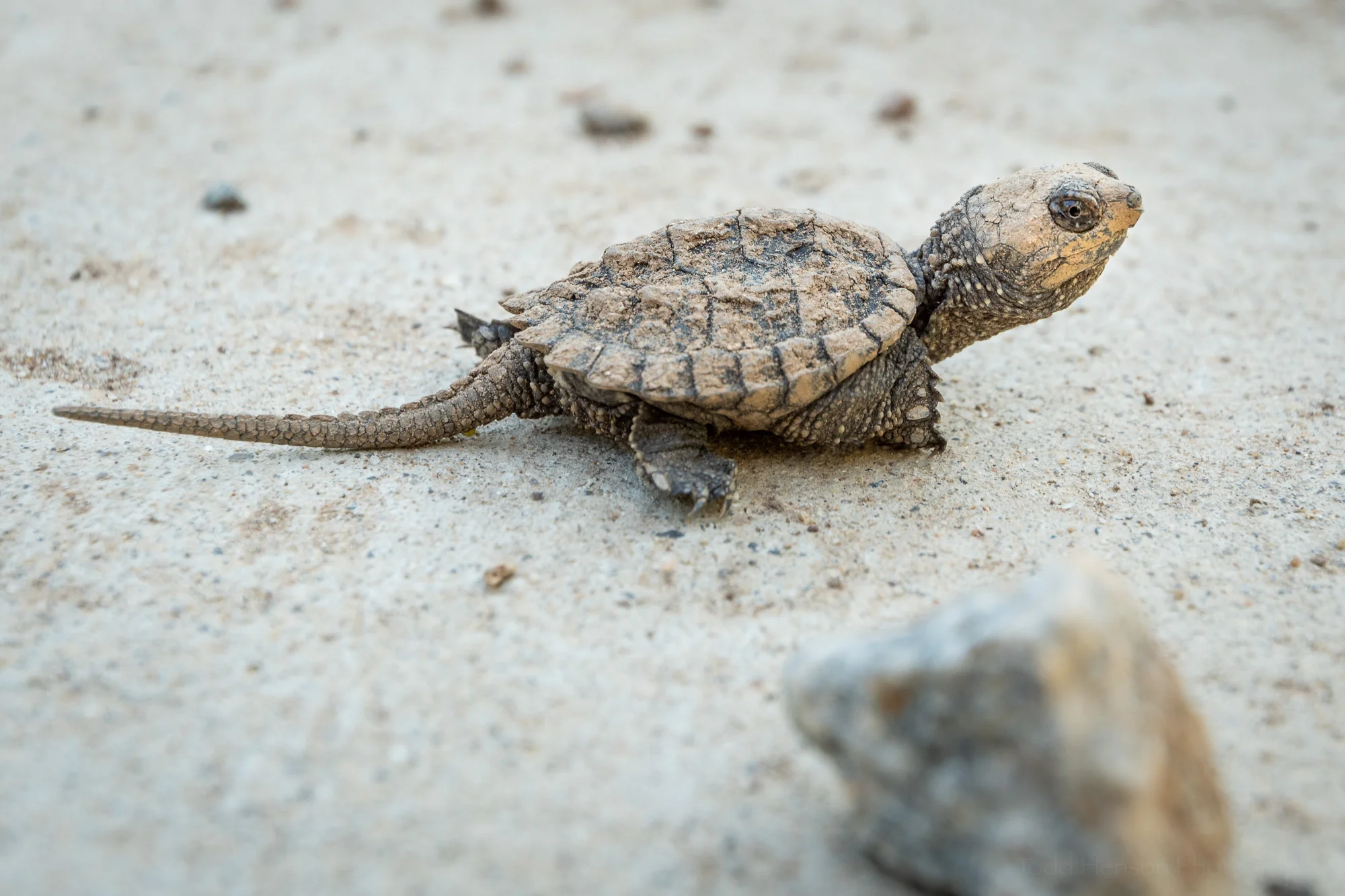Eastern Box Turtle on pavement shot from ground level.
Any day I can photograph an Eastern Box Turtle is a good day. This particular turtle was along the side of a paved trail in a local wildlife refuge. It used to be a road, but is now just part of the trail system.
We found the box turtle stopped maybe 6 feet from the edge of the pavement. There were trees on either side, and a stream nearby that passed under the road. This was a perfect environment for the turtle.
To capture these images I used a long telephoto lens to help blur the background. I wanted to look right at the turtle, from its perspective, so I set aside the tripod and instead lay down on my stomach on the pavement with the camera in front of me resting on the ground.
Closeup of Eastern Box Turtle
Then I slowly crawled forward to get as close as I could but still capture the entire turtle in the frame. I moved in a little closer to capture the closeup image. I love the eyes on this turtle, all the colors and patterns.
One of these days when I find a turtle like this I want to stick around long enough for the turtle to get used to me and begin walking. But this part of the trail was somewhat busy and I didn’t want to attract too much attention to the turtle, or agitate it. So I moved on after capturing these images.
For another example of this technique check out my post about photographing a green frog where I show images shot from different perspectives. As with that photo, I think I could have stopped down the aperture a bit more to capture just a little more depth of field, putting more of the turtle in focus. I often gravitate to the wider apertures, which limit depth of field and create nice blurry backgrounds. But sometimes more depth of field can also be a good thing, even when shooting these animal portraits.
Do you enjoy these posts?
Sign up to receive periodic emails with updates and thoughts. Don’t worry, I won’t spam you. And please consider purchasing artwork or products from my online store, and using my affiliate links in the sidebar to the right when shopping online.
I appreciate your support!


































